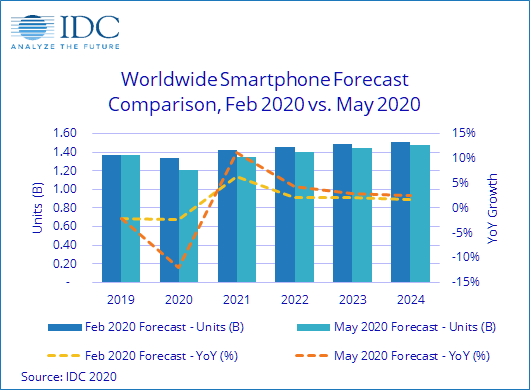Earlier on, research firm TrendForce had in April predicted a global smartphone production to slump a record 16.5 per cent in the second quarter. lockdowns, rising unemployment and the unpredictability of the economy have reduced consumer confidence and reprioritized spending towards essential goods, which has directly impacted the uptake of smartphones in the short term”, said Sangeetika Srivastava, senior research analyst, IDC. The report goes further to note that this figures represent a y-o-y drop in the history of its reporting. And it seems nothing is getting better soon. The whole of H1 is on track for an 18.2% decline.
Most smartphone producers globally have been forced to shut down stores as the pandemic kicks in. For instance, Apple, shut its retail stores in the United States and Europe following the outbreak and also introduced discounts on the iPhone 11 in China and released a new low-price iPhone SE model to weather a plunge in global smartphone demand. Basically, even the virtual smartphone launches are few, an indicator that things are getting thicker with the pandemic. Job losses are expected to increase globally which prompts most consumers to concentrate on shopping the basics to gadget upgrades. The 5G adoption analysts were expecting it would pull the industry but have likely been delayed until 2021. The pandemic is likely to result in the lowering of 5G handset prices occurring much earlier than they would have. In China, where the economy has begun to reopen and factories have resumed operations, IDC expects a single-digit decline in this year. The research firm also expects upcoming 5G deployment to help the recovery of smartphone shipments next year, adding it does not expect growth to return until the first quarter of 2021. “There’s no question that challenges lie ahead for the smartphone industry and we believe the economic downturn is going to cause some fluctuation in the vendor and price-tier landscape,” IDC’s Ryan Reith says in a statement. “The surge in consumer spending around devices that are less mobile than smartphones (PCs, monitors, video game consoles, etc.) will undoubtedly take a share of the consumer wallet that would have been put towards smartphone upgrades and 5G.”
